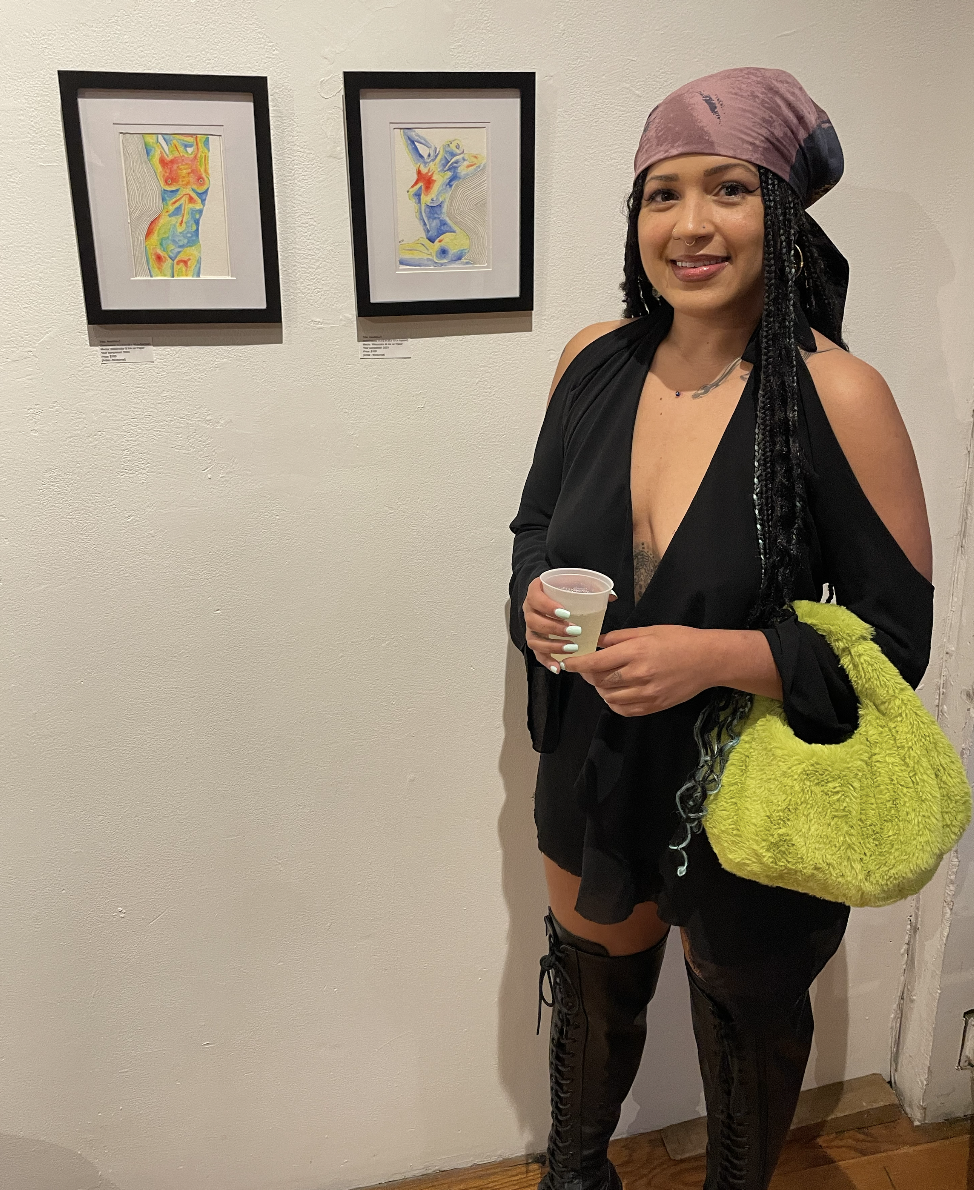A Paper Trail: Folding and Tearing New Meanings of 'Good On Paper'
“Paper is a symbol of humanity.” ~ Nocturnal
In a warm, well-lit gallery in Red Hook’s Compere Collective, eight artists are reinventing the meaning of "Good On Paper," the latest curated group show from Alexandra Jamieson. Showcasing the work of eight NYC-based women and non-binary artists, the exhibition challenges, surprises, and evokes a reconsideration of paper as an artistic medium.
Paper’s Versatile History And Future
Paper is arguably one of the first art technologies humans created. For centuries, paper has served as a canvas for doodles, sketches, and fine art alike; an origami for storytelling in three dimensions; and an archival material that carries the weight of history.
Though robust in its potential, paper can be frail by nature, often requiring a gentle touch. This ephemeral quality is both a challenge and a source of inspiration.
Artist Judith Ornstein reflects, "Paper is humble yet transformative. It’s ancient. You can fold it, tear it, paint on it; its versatility allows for endless possibilities." Her surprising cardboard sculptures are made of found and upcycled corrugated cardboard, and seem simultaneously strong and light.
Catalina Toro, a Columbia-born, Brooklyn-based artist, who spent years working as Vik Muniz’s artist assistant, appreciates paper’s ease of use. “I find working on paper very practical. At times ideas just have to flow. I have found myself accumulating quick paintings when I truly just need to let a feeling out, so I draw it on paper, just like writing.” Her work “No Bad Fish in Clear Waters” is a pastel drawing on vellum paper, which is very fragile. The vibrant colors belie the fracturable structure holding the pigment together.
Stories and Symbols
In the world of paper art, each wrinkle, tear, and layer can speak volumes. “The Abortion Trading Cards”, by curator-artist Alexandra Jamieson, present collaged histories of abortion lore. "I aim to tell stories of heritage, generational wisdom, and community. The act of tearing and reconstructing paper feels like a metaphor for the histories I explore."
Watercolors by the artist Nocturnal vibrate with color. “The symbolism of paper is about nostalgia… when you were a kid you just grabbed a piece and started creating.”
The Tactile vs. The Digital
As digital art forms proliferate, the tactile nature of paper-based artworks stands as a defiant contrast. Yet the artists in this collection see the intersection of technology and ancient paper arts as an exciting partnership.
“While I consider my work to be more of an analog process, technology still plays its part,” says Hayley Ferber, who features both a cyanotype and book artwork in Good On Paper. “If not directly interacting with the paper itself, digital media allows for the creation of images and transfer techniques that would be impossible otherwise. For example, my recent body of handmade paper was created by burning a digital image onto a silkscreen which is then placed over a freshly pulled wet handmade sheet of paper- wet pulp is sprayed through the screen to transfer the image to the sheet.”
Artist Ellen Niz, whose colorful, light-filled collage works are featured in the exhibition, believes “technology plays a huge role in everything we do these days, and my creative process has changed because of it. Maybe because I started as an artist as a photographer, processing the world through a camera lens and then revealing what I saw by printing — on paper! — the images, and revising them with crops and dodging and burning, I use my phone to take photos of my art as I’m creating. It helps me decide what to do next and where the work is unresolved.”
Sustainability and the Artist’s Role
In a climate-conscious world, the conversation inevitably turns toward the sustainability of using paper. Judith Ornstein, Alexandra Jamieson, and Hayley Ferber all incorporate recycled and found materials in their artworks. The artists’ exploration of bamboo, yucca, corn, and even rice were discussed.
Watercolor artist Jocelyn Benford prefers rag paper, which is handmade using recycled, refined cotton from rags, clothing and textiles. “Through experimentation I’ve found a few brands of paper that I really love, but I’m always trying new things.” Her artworks feature organic shapes and colors, and two pieces are triptychs strung together with waxed metallic embroidery cord.
The Future and Beyond
Where does paper art go from here? According to curator Alexandra Jamieson, new frontiers are continuously emerging within the community.
"Artists are starting to incorporate augmented reality, creating interactive paper installations. There’s also a resurgence of ancient techniques, like hand-made paper making with plant fibers. The future of paper arts is as expansive as our imagination, and offers an opportunity to combine old and cutting-edge techniques.”
Ellen Niz found inspiration in the other artists’ pieces. “Jocelyn Benford’s use of color and overlapping forms are stunningly beautiful. She has such a gift for composition and putting just the right shades and shapes and details in the right place, so your eye is stimulated by the work but your breath is calmed by it.”
'Good On Paper' is a testament to the enduring, evolving appeal of one of humanity’s oldest mediums. As we wander through the gallery, the paper works share stories and ideas, fragile yet resilient—much like the artists who have so skillfully brought it to life.
The exhibition is open to the public daily through September 23rd, from 3 - 6 PM, at 351 Van Brunt, Red Hook, Brooklyn.




